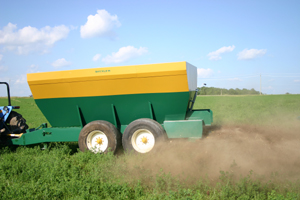|
Global Repair
Compost Equipment
|
Greenhouse
Gas Emissions & Compost Facts -Aerobic composting eliminates anaerobic bacteria the main producer of methane and nitrous oxide production in animal waste -Any emissions from aerobic composting are considered part of the natural carbon cycle -Aerobic composting appears to be the safest way of
converting organic waste streams into a stable value added product -Aerobic compost can be used as a landfill cover to reduce
and eliminate methane emissions and odour as a result -Our Global Repair method of composting promotes carbon sequestering, creating more humus, helping stabilize larger amounts of carbon into long term storage while encouraging greater microbial activity for further carbon sequestering -Aerobic compost creates a “sink”- (long term storage in
the soil) helping reduce emissions in the atmosphere by sequestering
(locking up) the carbon in the soil -Carbon is essential for soil stability and fertility -Current estimates 20 million tons of carbon are stored
annually in the US soil with the potential to store an estimated 180
million tons annually or 12 –14 % of annual emissions in the US,
approximately 1.7 billion metric tonnes per year, there is an estimated
167 million acres of farmland in Canada -Compost can also work as a bio filter for removing 80 –90 % of volatile organic compounds from gas streams substantially reducing odours -The amount of structure in the windrow has a direct relation
to the volume of CO2 emissions. Poor structure with excessive density
requires additional turning and usually results in higher CO2 readings. -Converting organic waste into aerobic compost provides us with the potential to enhance the growth of beneficial micro organisms in the soil, new or existing vegetation, allowing for more respiration in our atmosphere, which results in a reduction in CO2 levels and reduced fertilizer requirements
Contact
Global Repair
To order, or for more information please email: sales@globalrepair.ca, or call 1-866-271-0719, 1-416-686-3690, Copyright © 2003-2025 Global Repair LTD, Global Repair Compost equipment, Global Repair compost turner, Global Repair compost screener, Global Repair compost spreader, Global Repair compost bagger, Global Repair compost water wagon, global-repair, globalrepair
|


